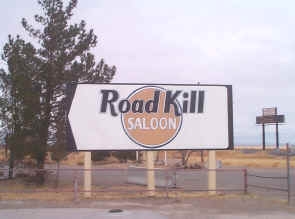BorderLand 16:
What have I learned after 33 days on the road, riding a motorcycle along the U.S./Mexico border?
A lot, I think. I tried to put much of that learning into the columns that have appeared since February 5th. But there are some other things that I haven’t shared—things that remain unsaid, things that are likely to affect what, and how, I write in the future.
The most important is the warmth and generosity of people, our common willingness— eagerness— to share. This did not come to me as some fine tuned epiphany. It was more like a large, powerful, warm rolling wave, the kind that brings a sublime combination of excitement and comfort. I wish I could bottle it and give it to everyone who has not experienced it.
The best evidence is reader e-mail. Within days of starting the trip it had come in an electronic wave, more than 200 messages at installmentbiker@yahoo.com, surging to over 400 by the end of the trip. Some were simple good wishes. Others were funny reminders to “keep the shiny side up.” Some were wistful remembrances, wishing they could be on the ride.
Those messages became my guide to the border.
While I left with a small bag of statistics— the kind of thing I rely on all too often— I had no idea what I was going to write about, or who I was going to talk to, when I left Dallas. I did not have a single interview scheduled for the entire trip. Everything came in the wave, from readers who sent messages.
It was a reader who put me in contact with the Yturria Land and Cattle Company and El Canalo Inn. It was there that I met someone who put me in touch with Bill Wolfe and Nova Link in Matamoras. From there I just followed the trail of reader messages, missing contact with some, making contact with others.
Writing from those contacts, I thought of Stendahl and his notion that a writer’s task was to “hold up a mirror to society.” The trip made me question how to hold the mirror. Journalists and the media are frequently criticized for being negative, for dwelling on things that are evil, miserable, tawdry, or heart breaking.
Before this trip, I would have said that the journalists’ viewpoint— the hard edge— comes with the territory. Today, I am not so sure.
I would like to find a way to communicate more of the context of our experience because on the border, as elsewhere, I felt that I was in a benign place, that most of us do the very best we can and wish no harm to others, that the real tragedy in our lives is not willful malice but the hurt we inflict on others because we don’t know any better or can’t do any better.
I also learned, once again, the danger of pre-conception. Some reader messages asked whether I was carrying a gun to protect myself, whether I have a van following my motorcycle with spare parts, or how many other people were on my team. It was as though I was going to the Amazon basin or trying to make contact with a lost tribe of cannibals.
The border isn’t that far away. You can reach any city on the border by scheduled air flight. While the culture is different from, say, New York City, it is still populated by people who want to eat regularly, pay their bills, do something useful, and to love and be loved. It has highways, phones, hotels, and restaurants. It has people who are very poor and people who are very rich. That’s one of the reasons it deserves our attention: it’s part of us.
More: Notes, mile marks and pictures
Borderland
Starting the journey: Riding into Laredo
A statistical picture of life along the border
Austin: The incredible disappearing Slacker
San Antonio: High Times and Low Water
Yturria Land and Cattle and El Canelo Ranch: Where’s the Beef?
Brownsville: Lifeguard on the Rio Grande
McAllen: Fields of dreams
All roads lead to Crystal City
Big Bend and the bridge at Presidio
Marfa: Herds of tomatoes, as far as the eye can see
Tucson: Containing growth
Tucson: Born to be wild?
Yuma and the dusty road to Mexicare
San Diego: The Ultimate Crop
Notes, mile marks and pictures
Websites:
The Roadkill Cafe: http://www.route66seligmanarizona.com/the-roadkill-cafe.html
This information is distributed for education purposes, and it is not to be construed as an offer, solicitation, recommendation, or endorsement of any particular security, product, or service.
Photo: Scott Burns/ Billboard for the Roadkill Cafe, Seligman, AZ
(c) A. M. Universal, 2000
